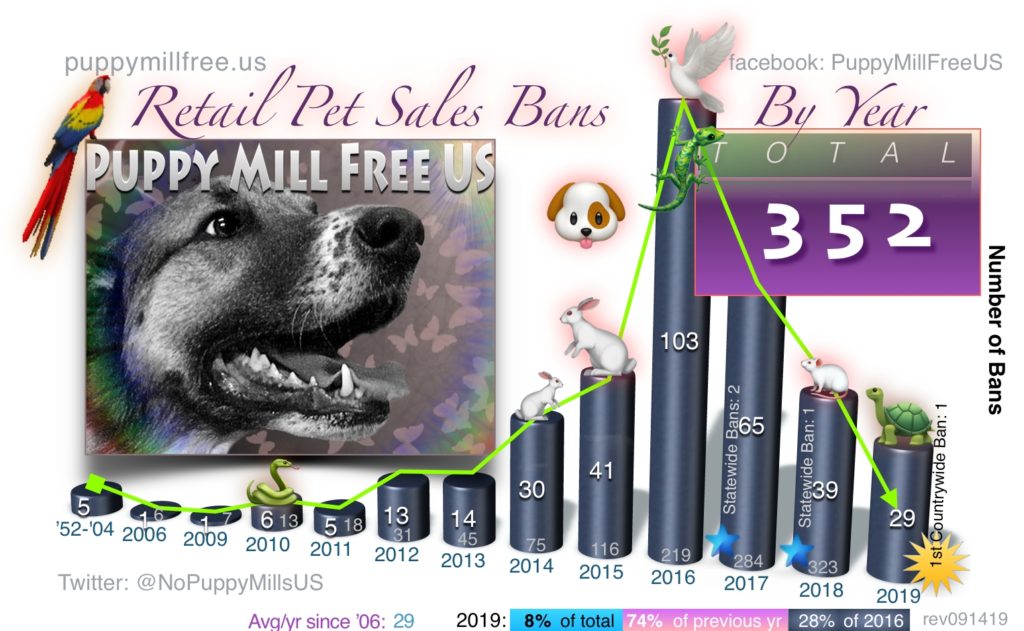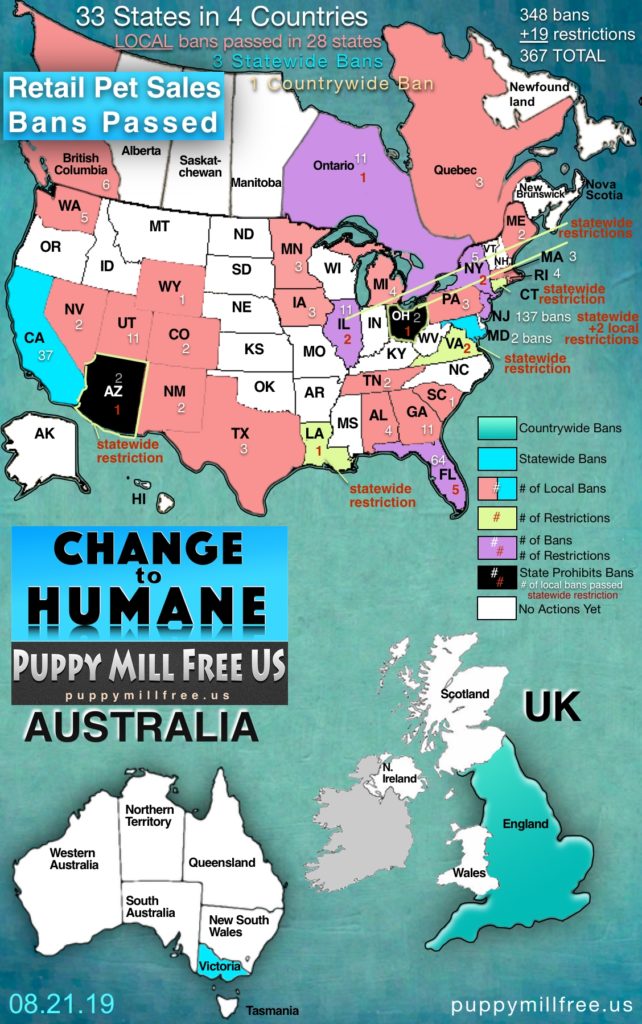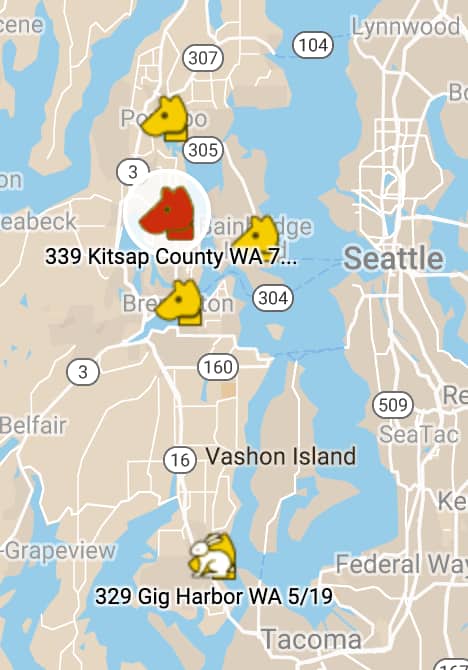We’ve tracked animals sales bans all the way back to 1952. But the movement to end the sale of dogs and cats and sometimes rabbits, ferrets, pot-bellied pigs, long-lived birds and large reptiles didn’t pick up steam until Albuquerque in 2006 and then South Lake Tahoe in 2009.

We take our average bans per year starting in 2006 where we had 1. It also includes 2009 where we had 1. As you can see in the graph, it also includes banner year 2016 with 103 bans.
We’re a bit late in the year to only reach average. Some years, however, like 2016, saw a majority of their bans enacted in the Autumn including in and around the Thanksgiving holiday and some in December.
The latest ban as of today is in Oveido, Florida, where super hero activist Michelle Lazarow convinced yet another Florida city to pass a ban. She states in an Orlando Sentinel article from July 22, 2019
[Lazarow] doubts the Legislature will pass statewide regulations strong enough to completely ban stores from selling dogs and cats from large commercial breeding operations.
Orlando Sentinel, 7/22/19
“I would love it, but I don’t see it happening,” she said. “And if they’re not going to do it, then let the cities and counties pass regulations on their own, and on what happens in their backyards.”
Lazarow added that it’s important Oviedo enact the ban before a store that sells dogs and cats from large breeding facilities decides to open in the city.
The average bans per year count is found in the bottom row of our graph, “Avg/yr since ’06: 29.”


